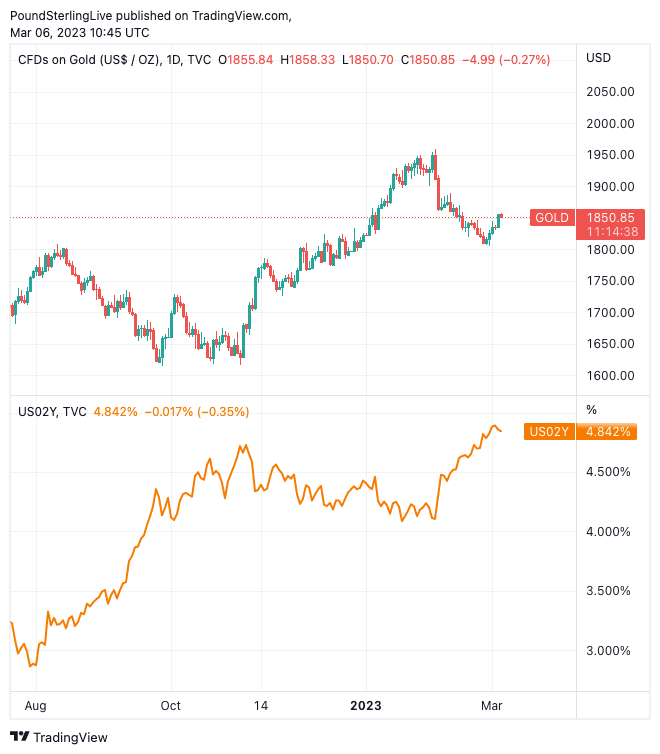Gold Prices and Stock Values Rise as Yields Retreat: XM.com
- Gold and equities rally
- U.S. bond yields retreat
- Dollar drifts lower

Image © Adobe Stock
Investors entered the new trading week in high spirits, as a calmer tone in bond markets helped to brighten the mood in other asset classes.
Equity markets and gold prices enjoyed a huge rally on Friday and attempted to extend those gains on Monday, fueled by a peculiar retreat in US yields.
Even though the latest ISM non-manufacturing survey was strong on every front - signalling a reacceleration in US economic growth, persistent inflationary pressures, and a booming labour market - bond yields still declined in the aftermath.
This was a strange reaction, which some market participants blamed on profit-taking after a furious rally in yields over the past month.
Yields act as a force of gravity in financial markets since they are essentially the price of money. The lower yields fall, the more attractive riskier bets like stocks become, and vice versa. This dynamic helps explain why the S&P 500 rose by 1.6% on Friday, while the Nasdaq gained 2%.
Nonetheless, this is a challenging environment for equities.
The resilience in the economic data pulse suggests that the trend in yields remains higher, valuations are still far too expensive, and corporate earnings are shrinking relative to last year - a combination that spells trouble for stock markets.
Gold Prices Jump as Yields Retreat
Over in the commodity complex, gold bounced back with force, rising more than 2% last week.
In classic fashion, the precious metal took advantage of the pullback in real yields and the US dollar, although it will be tough for this advance to continue for long in a regime where the Fed is expected to stay restrictive for longer.
Above: Gold prices (top) and the two-year U.S. bond yield, showing the inverse relationship.
Dollar Falls Victim to Yields
In the FX arena, the dollar fell victim to the decline in yields and the cheerful mood in equity markets. It lost the most ground against the British pound, a currency that has deep links with global risk appetite.
While the dollar’s retreat was not very dramatic, it was strange considering the encouraging US data on Friday.
This asymmetric reaction function has been a consistent theme in recent months - the dollar often struggles to capitalize on strong US releases but falls sharply on any disappointments.
Hence, there's a sense of hesitation towards the dollar despite rising Fed bets, which might reflect optimism about other economic regions judging by the relentless flows into European stocks.
Central Banks: RBA, Powell
A week loaded with promising events for traders lies ahead. Central bank decisions will be in the spotlight in Australia, Canada, and Japan.
Meanwhile in the US, the Fed chief will testify before Congress ahead of the all-important US employment report.
The ball will get rolling with the Reserve Bank of Australia early on Tuesday, where markets assign an 80% probability for a quarter-point rate increase.
Since it is not fully priced in, a decision to raise rates could briefly boost the Australian dollar, although the currency’s overall trajectory will depend on any signals about the terminal rate and any developments in China.
Speaking of China, the nation announced it will lower its economic growth target to 5% for this year.
This reflects the challenges China faces with the deleveraging of its property sector, and suggests the government is not prepared to open the stimulus floodgates just to boost growth anymore. Oil prices and China-sensitive currencies did not take kindly to that signal.
Marios Hadjikyriacos is Senior Investment Analyst at XM.com. The original article can be viewed here.





